Poplar trees are common in the UK and there are several different species and hybrids here and worldwide.
Examples of species are Grey Poplar, White/Silver Poplar and the related Aspen, while examples of hybrids are Black Poplar and Lombardy Poplar.
The Lombardy Poplar is a variety that is tall, straight and elegant, and is common as a landscaping tree.
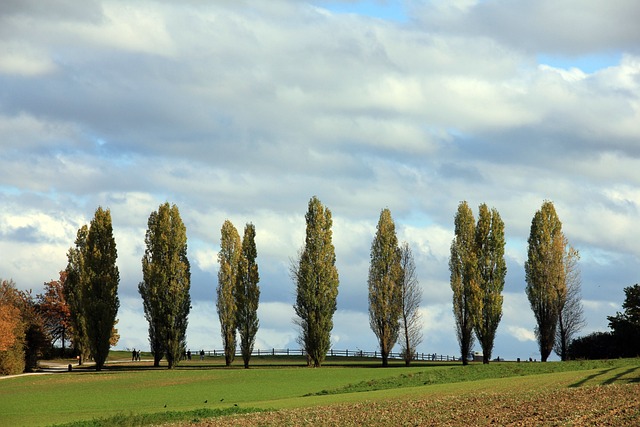
They grow very fast, and are related to the Willow.
Poplars are deciduous and produce catkins as flowers.
They can be grown ornamentally and have large, sometimes invasive root systems.
So if you want an answer to “Why is my Poplar tree dying?” this article will look at at common reasons for Poplar decline, and how to fix them.
Pests
Aphids
Aphids are small sap sucking insects that feed on Poplar leaves.
They will usually congregate on the underside of leaves and around leaf stems.
They excrete a sweet waste product called honeydew which can sometimes be farmed by ants.
This substance can make leaves sticky and attract a black sooty mould.
The Poplar Gall Aphid can cause a gall to be formed, which is a small swelling in the stem just before the leaf.
Inside this gall are the developing baby aphid nymphs.
How to fix:
- Aphids should not overly damage an established poplar.
- The insects themselves, the honeydew and the mould it attracts can be wiped off with a mild soap solution.
- The galls can look a little unattractive, but do not really harm the tree so can be left alone.
- Encourage natural predators like birds and ladybirds.
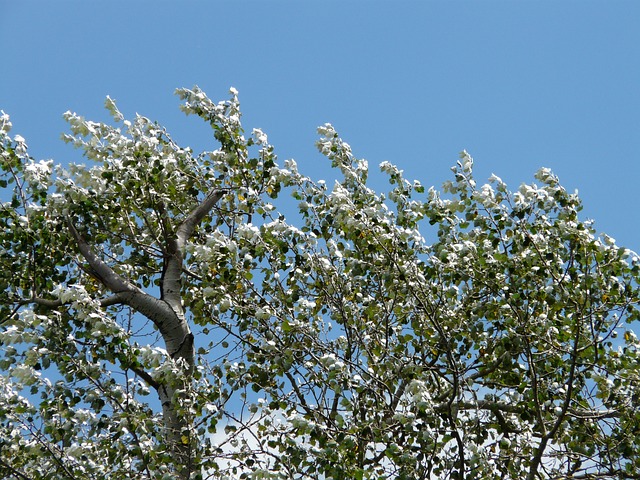
Poplar Sawfly
These winged insects are orange in colour with a black head.
The larvae look like yellow caterpillars with white hair, black spots and a black head.
They congregate together and feed on the underside of leaves.
Established Poplar trees should not suffer too much and will regrow any damaged leaves, but younger saplings may be affected more significantly leading to stunted growth and even death.
How to fix:
- Natural predators are the best way of keeping Sawfly at bay, so encourage birds, frogs and other insects into your garden.
- This can be achieved by having a biodiverse selection of plants, perhaps a pond, and allowing sections of long grass and undergrowth to develop.
- If you find yourself with an infestation of Sawfly, you can either pick them off (wearing gloves) into a container and dispose of them, or apply Neem oil as directed on the packet.
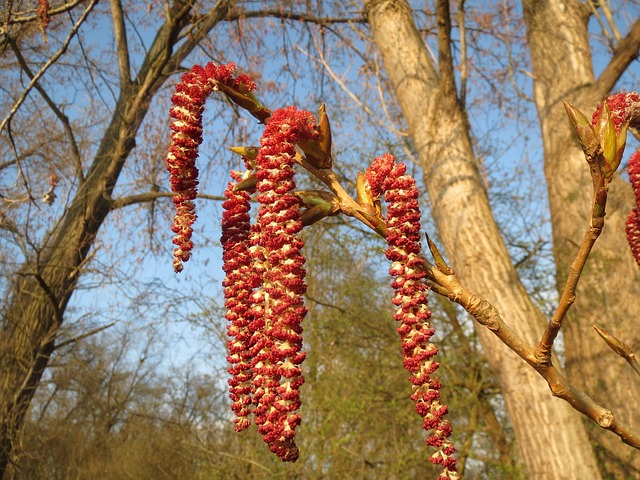
Bronze Birch Borer and Poplar Borer
These beetles lay their eggs in crevices in the bark.
The larvae then hatch and bore into the wood just below the bark, and their feeding on this layer of wood can cause large areas of damage.
Look for wrinkled or raised bark, sometimes in spirals, that looks like something has been tunnelling around below the surface.
You may also see holes where the Borer has become a beetle and exited the tree, possibly with sap running out.
There may be sawdust at the base of the tree, and the canopy may look thin with areas of dieback.
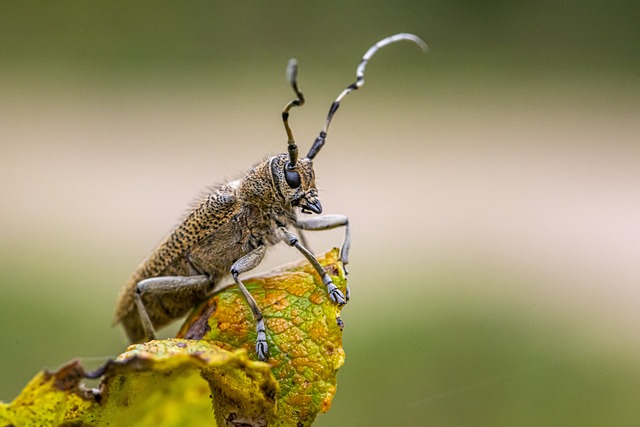
How to fix:
- If you suspect your Poplar tree has an infestation, check other trees in the area, including Silver Birches, as these are also hosts.
- If many are affected it is best to contact a professional who can apply a controlled chemical treatment.
- If the canopy has died back by more than a half, unfortunately the tree is unlikely to survive and the best option will be to remove it.
- Be careful when collecting Poplar and Silver Birch firewood, as these insects can travel within the wood and may go on to contaminate new areas.
Fungus
Canker
The pathogens that cause cankers enter the tree through wounds in the bark, and results in areas of swollen, distorted or sunken dead tissue.
Cankers can grow to encircle a branch, cutting off circulation of food and nutrients and causing that branch to die back.
How to fix:
- Carefully cut out any branches with cankers, as long as they are not part of the main stem
- Cut 10cm below the canker to where there is strong healthy wood.
- Use sharp shears or loppers, make a clean cut, and sanitise them before and after use.
- Burn or dispose of the affected branches (not in the compost heap).
- Try to avoid damaging your Poplar bark to minimise chances of infection.
- Watch out for pets scratching the tree, and avoid using strimmers in that area.
- Check for branches rubbing together. Carefully remove one to prevent a wound.
- If the canker affects the main trunk then the tree will likely not survive, it is best in this instance to remove the tree entirely.
Aspen Trunk/Heart Rot
This mainly affects Aspen trees but is also known to affect Poplar as the two are related.
The fungus enters the tree through branches that have broken off leaving a stub.
It can be quite damaging as the fungus develops inside the trunk and by the time the fruiting bodies, or shelf/bracket fungi emerge from the trunk, the tree is already severely internally compromised.
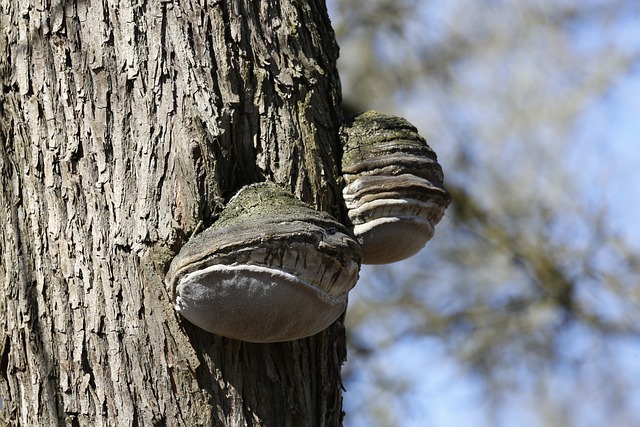
Cankers can also form.
How to fix:
- Unfortunately this type of fungus causes extensive rot from the inside out.
- If your tree is infected then the best course of action is to prune out infected branches before the fungus reaches the main trunk.
- Older branches and sections are more likely to succumb that younger ones so vigilance and management of stems is a good way to keep on top of general tree health and condition.
- Avoid accidental damage to bark and branches where possible.
- If the main trunk is affected with multiple shelf fungi coming out, then the tree is severely infected and structurally compromised.
- The tree should be removed to avoid collapse and potential damage to property or injury to people.
Anthracnose
This fungus can cause black and brown spots on leaves and shoots, and is common in shade and forest trees.
These spots then decompose leaving distorted foliage and ragged holes.
Affected foliage can then turn yellow to brown, leading to leaf drop.

How to fix:
- Regularly clear any fallen leaves as these may harbour spores. Dispose of (not in the compost heap).
- Keep the base of the tree and the canopy free from debris to improve air circulation.
- Provide water during very dry weather so the Poplar does not become drought stressed and susceptible to attack.
- Water at the base of the tree rather than spraying up onto the canopy, as water sitting on foliage will encourage fungus to develop.
- Anthracnose should not present a serious problem in established and otherwise healthy trees.
Rust
Rust is a common leaf fungus and affects many plants.
It looks like yellow spotting on the top sides of leaves which then turns into orange to red or brown pustules on the underside, resembling dust.
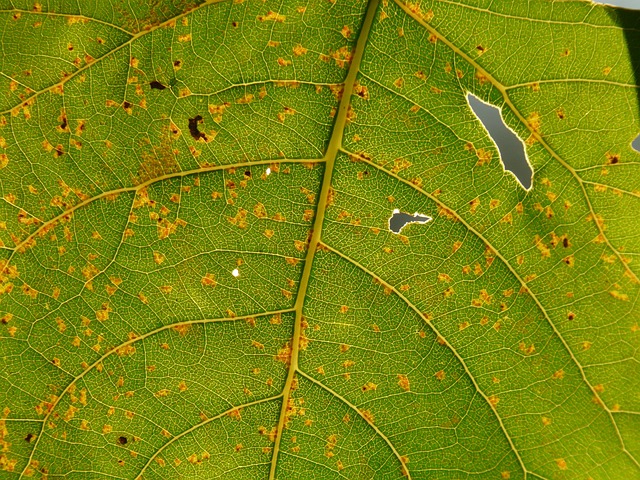
There may be leaf drop in affected trees.
It should not affect domestic garden trees too severely, other than cosmetically.
How to fix:
- When planting Poplar trees, do not plant them too close together.
- This will improve air circulation and decrease contamination.
- As for Anthracnose above, regularly clear any fallen leaves as these may harbour spores. Dispose of (not in the compost heap).
- Keep the base of the tree and the canopy free from debris to improve air circulation.
- Provide water during very dry weather so the Poplar does not become drought stressed and susceptible to attack.
- Water at the base of the tree rather than spraying up onto the canopy, as water sitting on foliage will encourage fungus to develop.
Poplar Scab
This fungus can develop in the spring if there is a lot of rainfall.
The foliage and branch tips rot and turn black.

It can cause a large amount of leaf drop resulting in a significant reduction in canopy density.
Younger trees can be seriously affected, and Black Poplar trees seem to be more susceptible.
How to fix:
- In cases where trees are severely infected, it is best just to remove the entire tree.
- Where more established trees show only sections of scab, prune these out using sterilised shears.
- Regularly clear any fallen leaves as these may harbour spores. Dispose of (not in the compost heap).
- Keep the base of the tree and the canopy free from debris to improve air circulation.
- Provide water during very dry weather so the Poplar does not become drought stressed and susceptible to attack.
- Water at the base of the tree rather than spraying up onto the canopy, as water sitting on foliage will encourage fungus to develop.
Bacteria
Wetwood / Slime Flux
This bacterial infection affects many trees and all Poplar varieties, but seems to be most problematic for the Lombardy Poplar.
Wetwood is also known as Slime Flux.
The trunk appears to be water soaked and is darkly stained as if pouring from a sunken point in the bark.
When viewing a cross section, the internal wood also seems wet and shows as an irregular patch.
There may be a rotting odour, and trees may show general decline.
How to fix:
- This infection can be fatal, however it can sometimes be reversed if tackled promptly.
- Prune out any dead or diseased branches using sterilised shears.
- Remove any dead bark to promote clean wound healing.
- Make sure the tree is not drought stressed, and if in poor soil and looking unhealthy you can try fertilising lightly to provide the Poplar with some more nutrients to aid recovery.
- If the Poplar manages to recover, the wound will dry up and heal over in a year or so.
Final Thoughts
Poplar trees are very common in the UK and beautiful to look at in the landscape.
Many people will be familiar with the Lombardy Poplar lining roads and fields in the countryside.
Have a look at these other articles covering issues with Silver Birch and Whitebeam.
Hopefully I have covered the main issues that can affect the Poplar, but if you spot something that you cannot identify, please drop me a message and I will do my best to help.

